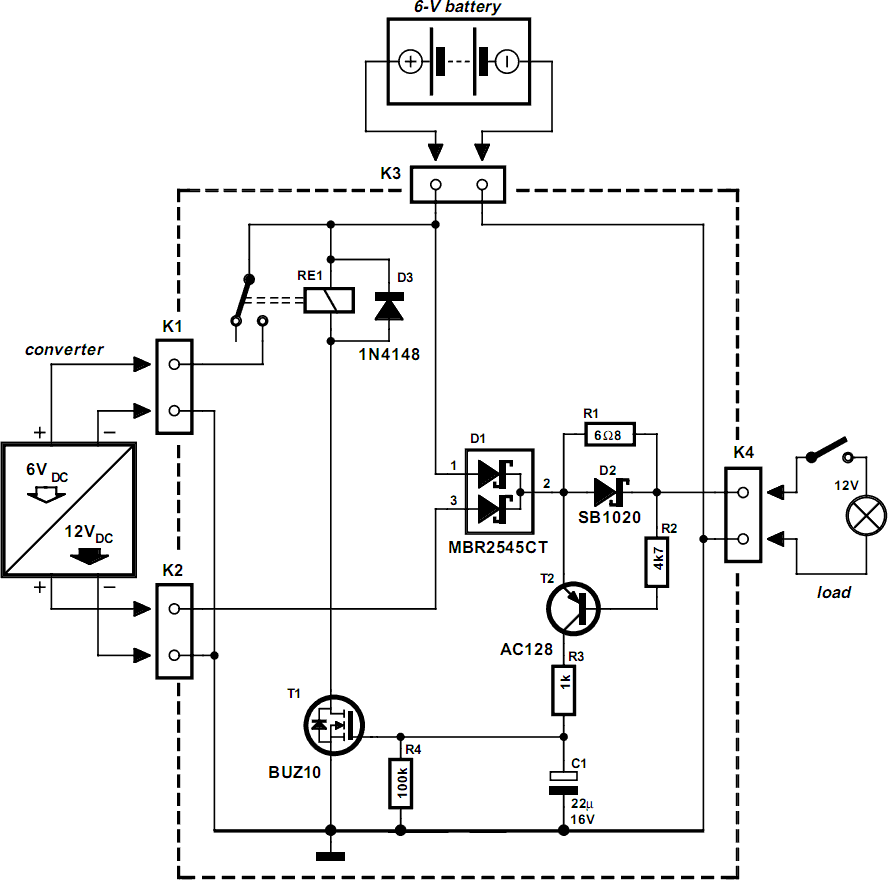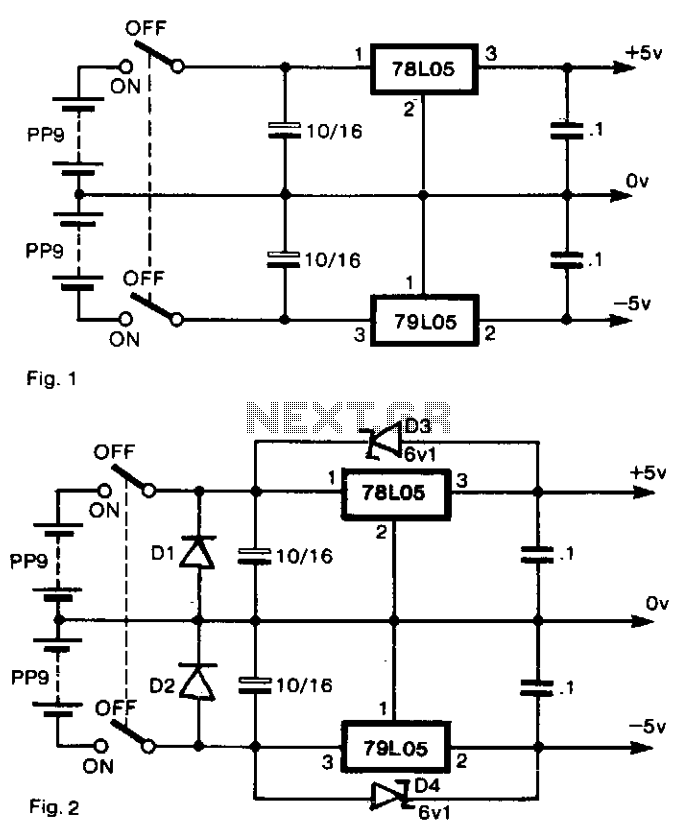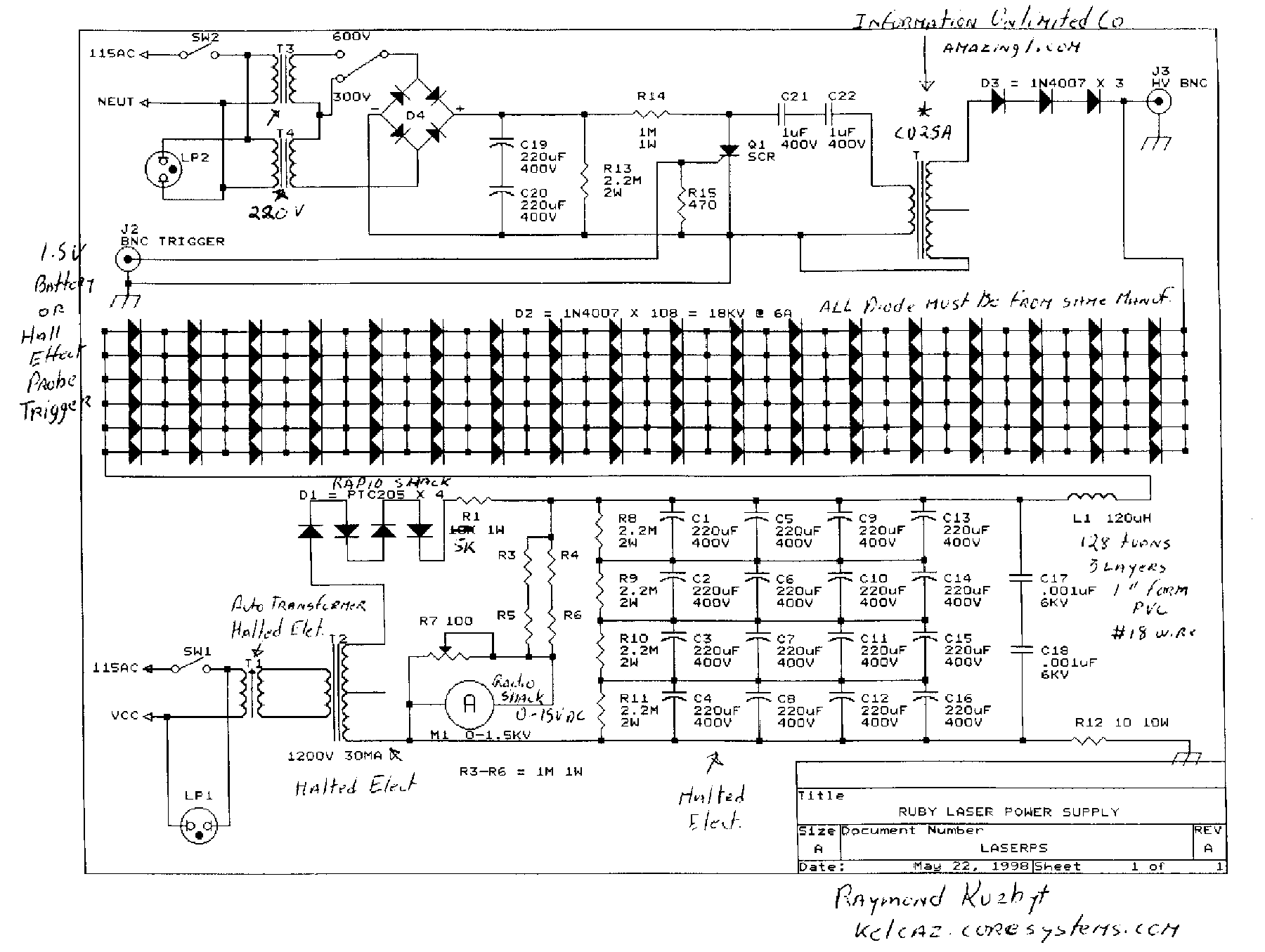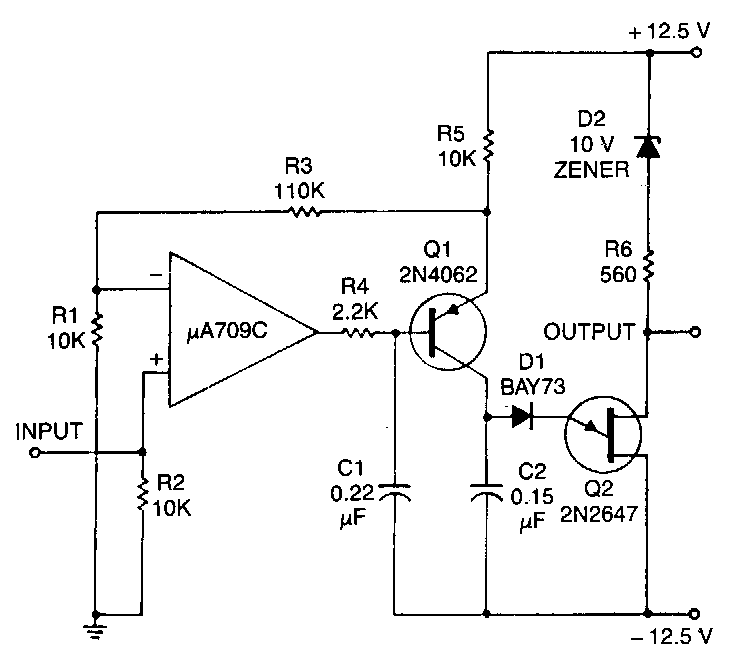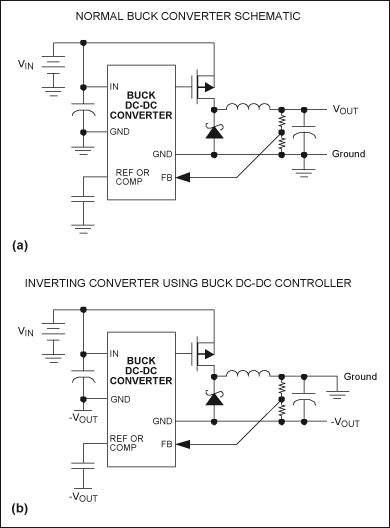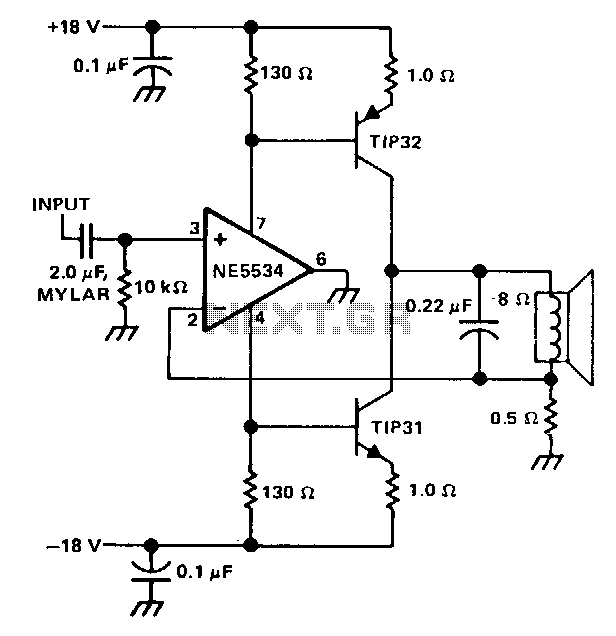
12 volt power supply (7812)
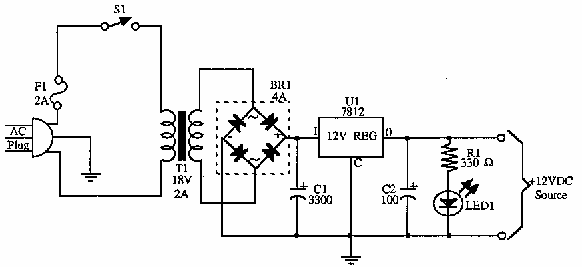
Please operate caution when building this power supply. It is run on standard 117 ac current - and under the right circumstances 117 ac can kill you. Use a plastic enclosure if possible to decrease chances of short-circuiting. More: Don't use the power supply if it's wet, and never run it without the specified fuse. All resistors are 5 or 10 percent tolerance, 1/4-watt. All capacitors are 10 percent tolerance.
The power supply described operates using standard 117V AC, which necessitates strict adherence to safety protocols to prevent electrical hazards. The design should incorporate a plastic enclosure to mitigate the risk of short-circuiting, especially in environments where moisture may be present.
Key components in the power supply include resistors and capacitors, both of which have specified tolerances. Resistors should be rated at either 5% or 10% tolerance with a power rating of 1/4 watt. This specification ensures that the resistors can handle the power without overheating, while the tolerance indicates the permissible deviation from the nominal resistance value, which is crucial for maintaining circuit functionality.
Capacitors in the circuit should have a tolerance of 10%. This tolerance level is important for ensuring stable performance, as it dictates the variation in capacitance that can occur due to manufacturing differences. The choice of capacitors will also depend on their voltage rating, which must exceed the maximum voltage expected in the circuit to prevent breakdown.
The power supply circuit should include a fuse as a protective measure. The fuse serves to interrupt the circuit in the event of a fault condition, thereby preventing damage to the components and reducing the risk of fire or electric shock. It is essential to use the specified fuse rating to ensure effective protection.
Overall, careful consideration of component selection, enclosure design, and safety features is critical when constructing this power supply to ensure reliable and safe operation.Please operate caution when building this power supply. It is run on standard 117 ac current - and under the right circumstances 117 ac can kill you. Use a plastic enclosure if possible to decrease chances of short-circuiting. Don`t use the power supply if it`s wet, and never run it without the specified fuse. all resistors are 5 or 10 percent tolerance, 1/4-watt all capacitors are 10 percent tolerance 🔗 External reference
The power supply described operates using standard 117V AC, which necessitates strict adherence to safety protocols to prevent electrical hazards. The design should incorporate a plastic enclosure to mitigate the risk of short-circuiting, especially in environments where moisture may be present.
Key components in the power supply include resistors and capacitors, both of which have specified tolerances. Resistors should be rated at either 5% or 10% tolerance with a power rating of 1/4 watt. This specification ensures that the resistors can handle the power without overheating, while the tolerance indicates the permissible deviation from the nominal resistance value, which is crucial for maintaining circuit functionality.
Capacitors in the circuit should have a tolerance of 10%. This tolerance level is important for ensuring stable performance, as it dictates the variation in capacitance that can occur due to manufacturing differences. The choice of capacitors will also depend on their voltage rating, which must exceed the maximum voltage expected in the circuit to prevent breakdown.
The power supply circuit should include a fuse as a protective measure. The fuse serves to interrupt the circuit in the event of a fault condition, thereby preventing damage to the components and reducing the risk of fire or electric shock. It is essential to use the specified fuse rating to ensure effective protection.
Overall, careful consideration of component selection, enclosure design, and safety features is critical when constructing this power supply to ensure reliable and safe operation.Please operate caution when building this power supply. It is run on standard 117 ac current - and under the right circumstances 117 ac can kill you. Use a plastic enclosure if possible to decrease chances of short-circuiting. Don`t use the power supply if it`s wet, and never run it without the specified fuse. all resistors are 5 or 10 percent tolerance, 1/4-watt all capacitors are 10 percent tolerance 🔗 External reference
